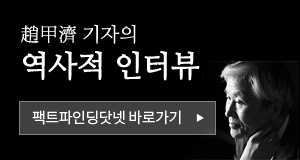오늘 라스 베이거스의 호텔 방에서 음악회장을 향하여 총기 난사를 하고 자살한 미국인은 64세이고, 방에는 10자루나 되는 장총이 있었다고 한다. 네바다 주는 총기 규제가 가장 느슨한 곳이지만 그렇게 많은 총을 갖다 놓을 때 전혀 제지하는 사람이 없었다는 이야기이다. 미국인의 총기 소지는 미국의 독립이 총을 든 민병대에 의하여 이뤄졌다는 점과 관련 있다. 수정 헌법 제2조에 의하여 총기 소지는 권리로 인정되었다. 아무리 총기 사고가 나도 총기 금지는 불가능하고 규제 강화가 가능할 뿐이다.
미국인은 건국 때 총기 소지의 필요성을, 민병대 조직, 법집행, 폭압정권에 대한 저항, 침략자 격퇴, 그리고 정당방위에 두었다. 헌법적 근원은 1689년 영국에서 제정된 권리장전과 관련 있다. 이 장전에서 영국의회는 개신교도에게 왕이 무장해제를 명령할 수 없도록 하는 등 총기 소지를 광범하게 허용하였다. 총기 소지는 自衛를 위한 자연법적 권리로 여겨졌다.
미국에서 가장 총기를 많이 소지하는 이들은 개신교도들이란 통계가 있다. 한적한 농촌 거주자가 도시 거주자보다 총기 소지율이 두 배 이상 높다.
1791년 미국 의회가 통과시킨 수정헌법 2조엔, “잘 통제되는 민병대는 자유로운 국가를 유지하는 데 필요하므로 무기를 보유, 휴대하는 자유는 침범될 수 없다”는 규정이 있다. 규제는 할 수 있지만 총기 금지는 위헌이다.
조지아주는 1837년에 권총 소지를 금지시키는 법을 통과시켰지만 대법원은 이를 위헌이라고 판단, 폐기시켰다.
1865년에 남부의 몇 개 주는 흑인노예 해방에 대응, 흑인들이 총기를 보유하는 것을 금지시켰다.
1871년에 국가 장총 협회가 조직되었는데 전시에 명중률을 높이는 것을 목표로 하였다.
1968년 총기규제법이 통과되었는데, 나이, 전과 등을 감안하여 총기를 보유할 수 없는 사람들을 명시하였다.
1989년, 캘리포니아 주는 半자동 공격 무기의 소지를 금지시켰다.
인구가 3억1900만인 미국엔 3억7100만 자루의 총이 있다. 1억4600만 자루는 권총이다. 총기를 가진 집은 36~49%로 추정된다. 남자의 45%, 여자의 15%, 백인의 33%, 유색인종의 22%, 공화당원의 38%, 민주당원의 22%가 총기소유자이다.
60%가 범죄예방을 위하여 총기를 휴대한다고 대답하였다. 2014년에 1만4249건의 살인사건이 있었는데 68%가 총기를 사용하였다.
폭력적 범죄 중 10%는 총기사용에 의한 것이다.
2000년의 조사에 의하면 연간 총기를 사용, 자신을 보호하는 경우가 약99만 건이다. 지난 5년간 가족 중에서 자위적 목적으로 총기를 사용한 경우가 3.5%였다. 1994년 통계로는 총기를 사용, 가택 침입자를 격퇴한 경우가 연간 49만8000건이었다.
미국인은 285명 중 1명꼴로 그들의 생애 중에 피살된다.
2014년 법무부 통계에 따르면 2005년에 석방된 죄수중 77%는 재범하여 또 체포되었다.
1976년 워싱턴 시는 권총 소지를 금지시키고 집에 있는 총기도 장전하지 말 것, 분해해 둘 것을 의무화하였다. 2008년 미국 대법원은 이 법을 위헌으로 결정하였다. 이 기간 워싱턴에서 살인발생률은 미국 평균의 8배로 올랐다가 정상화되었다.
The Second Amendment (Amendment II) to the United States Constitution protects the right of the people to keep and bear arms and was adopted on December 15, 1791, as part of the first ten amendments contained in the Bill of Rights.[1][2][3][4] The Supreme Court of the United States has ruled that the right belongs to individuals,[5][6] while also ruling that the right is not unlimited and does not prohibit all regulation of either firearms or similar devices.[7] State and local governments are limited to the same extent as the federal government from infringing this right per the incorporation of the Bill of Rights.
The Second Amendment was based partially on the right to keep and bear arms in English common law and was influenced by the English Bill of Rights of 1689. Sir William Blackstone described this right as an auxiliary right, supporting the natural rights of self-defense, resistance to oppression, and the civic duty to act in concert in defense of the state.[8]
In United States v. Cruikshank (1876), the Supreme Court of the United States ruled that, 'The right to bear arms is not granted by the Constitution; neither is it in any manner dependent upon that instrument for its existence' and limited the scope of the Second Amendment's protections to the federal government.[9] In United States v. Miller (1939), the Supreme Court ruled that the Second Amendment did not protect weapon types not having a 'reasonable relationship to the preservation or efficiency of a well regulated militia.'[10][11]
In the twenty-first century, the amendment has been subjected to renewed academic inquiry and judicial interest.[11] In District of Columbia v. Heller (2008), the Supreme Court handed down a landmark decision that held the amendment protects an individual right to possess and carry firearms.[12][13] In McDonald v. Chicago (2010), the Court clarified its earlier decisions that limited the amendment's impact to a restriction on the federal government, expressly holding that the Due Process Clause of the Fourteenth Amendment incorporates the Second Amendment against state and local governments.[14] In Caetano v. Massachusetts (2016), the Supreme Court reiterated its earlier rulings that 'the Second Amendment extends, prima facie, to all instruments that constitute bearable arms, even those that were not in existence at the time of the founding' and that its protection is not limited to 'only those weapons useful in warfare'.[15]



















미국은 북조선에 앞서 이미 전 인민의 武裝化를 이룬 나라 - 어떤 나라도 미국을 침략해서이길 수 없다. 전 국민이 민병대인 나라를 누가 이길 수 있겠는가.